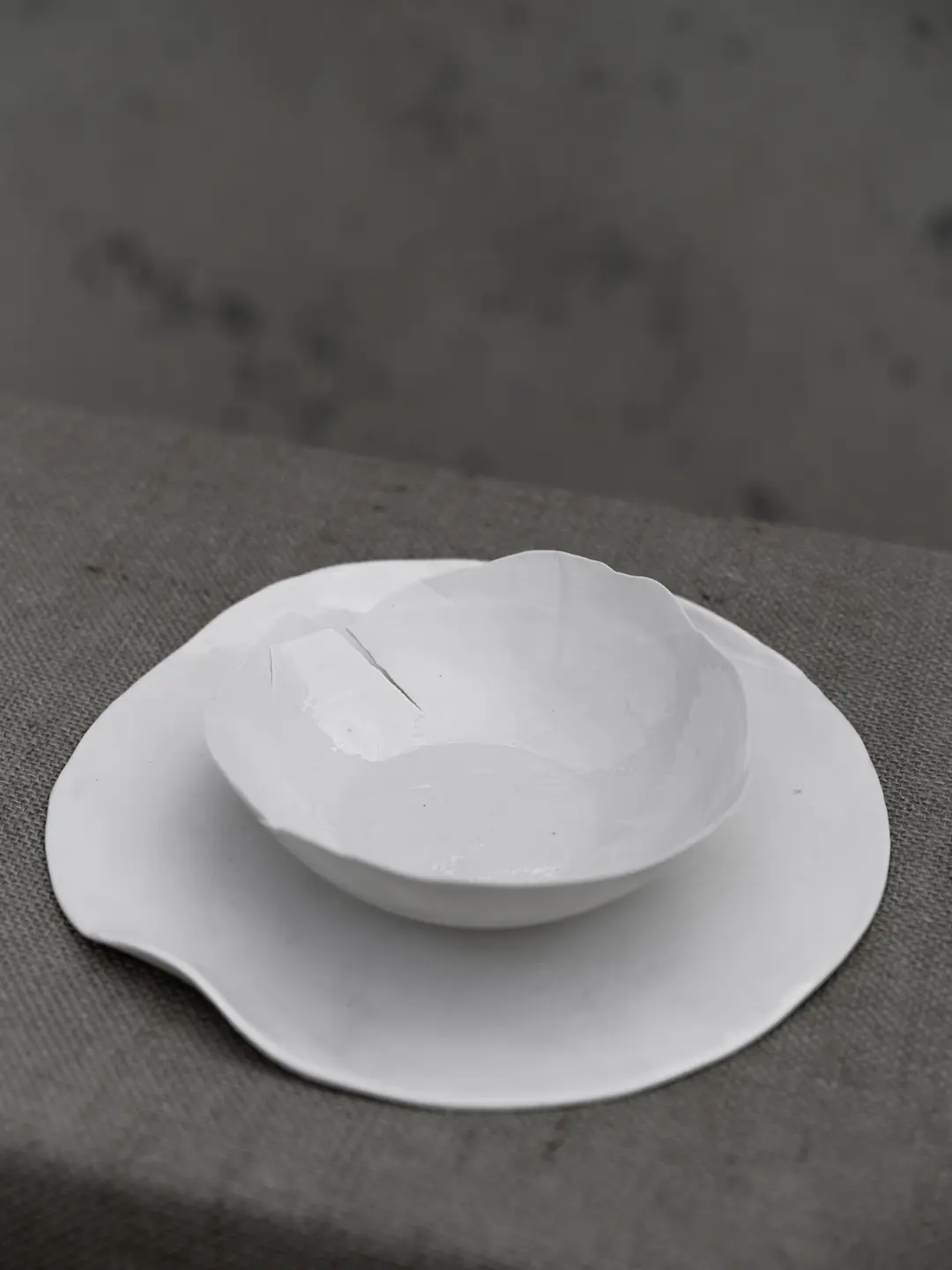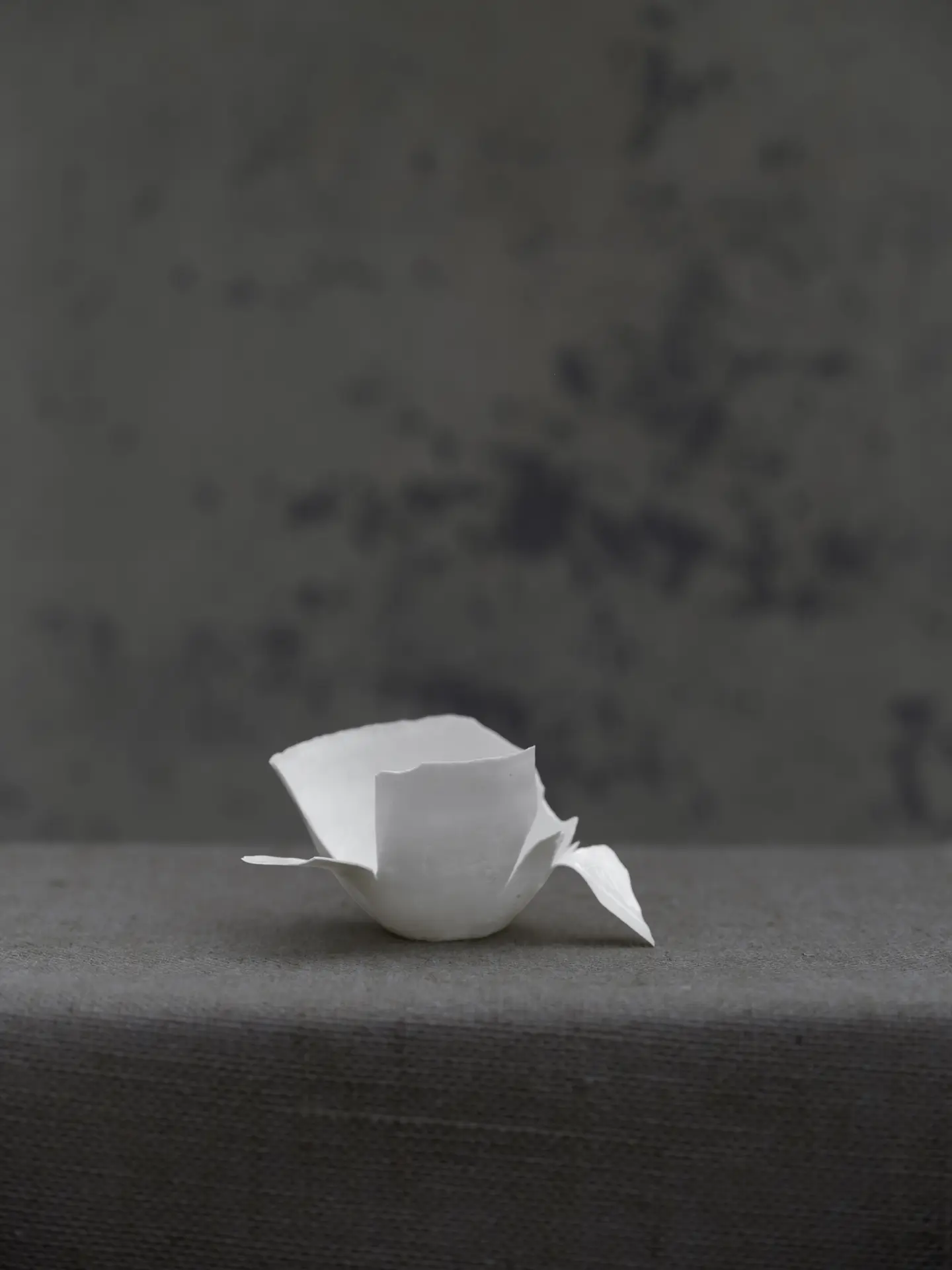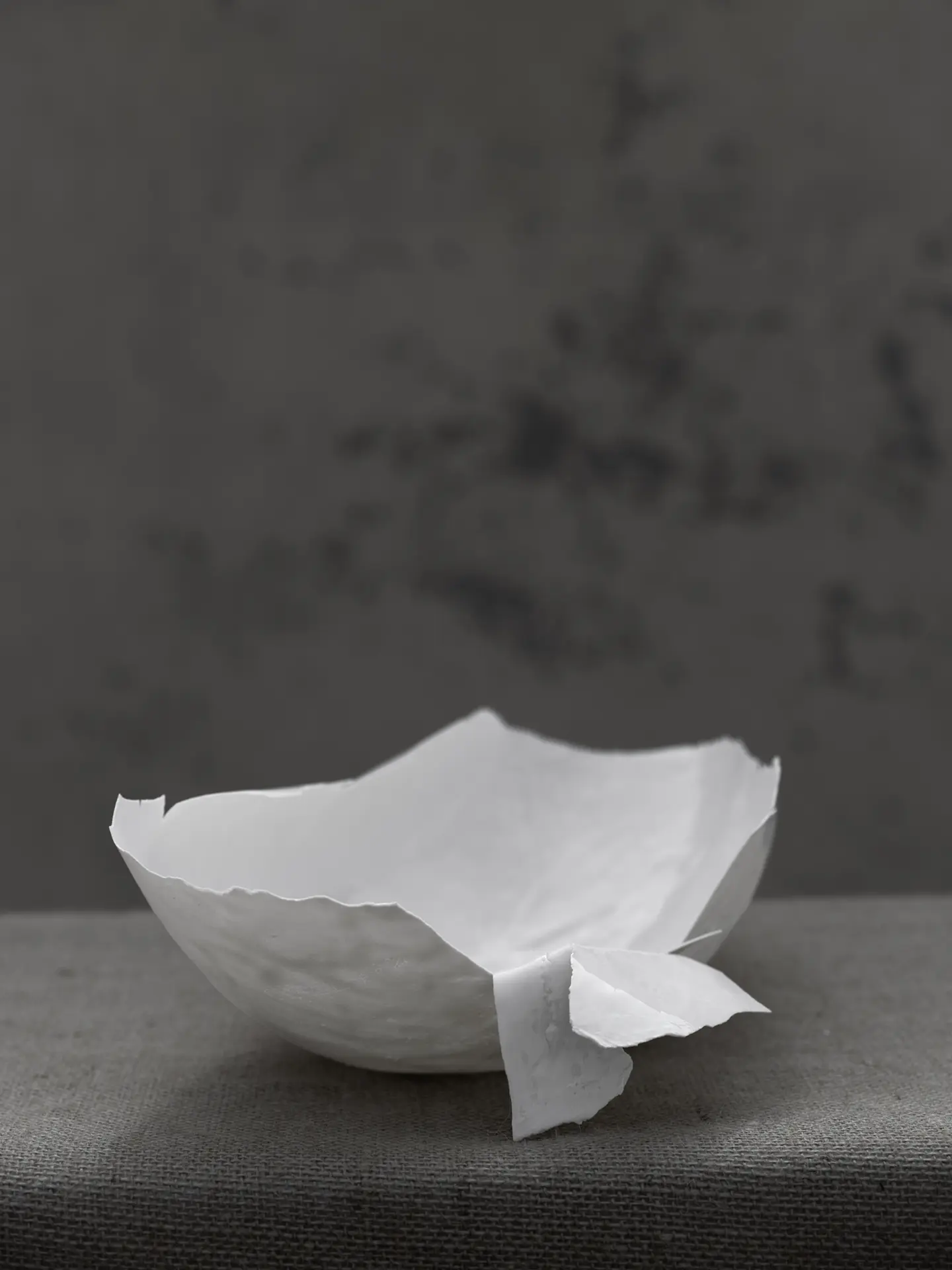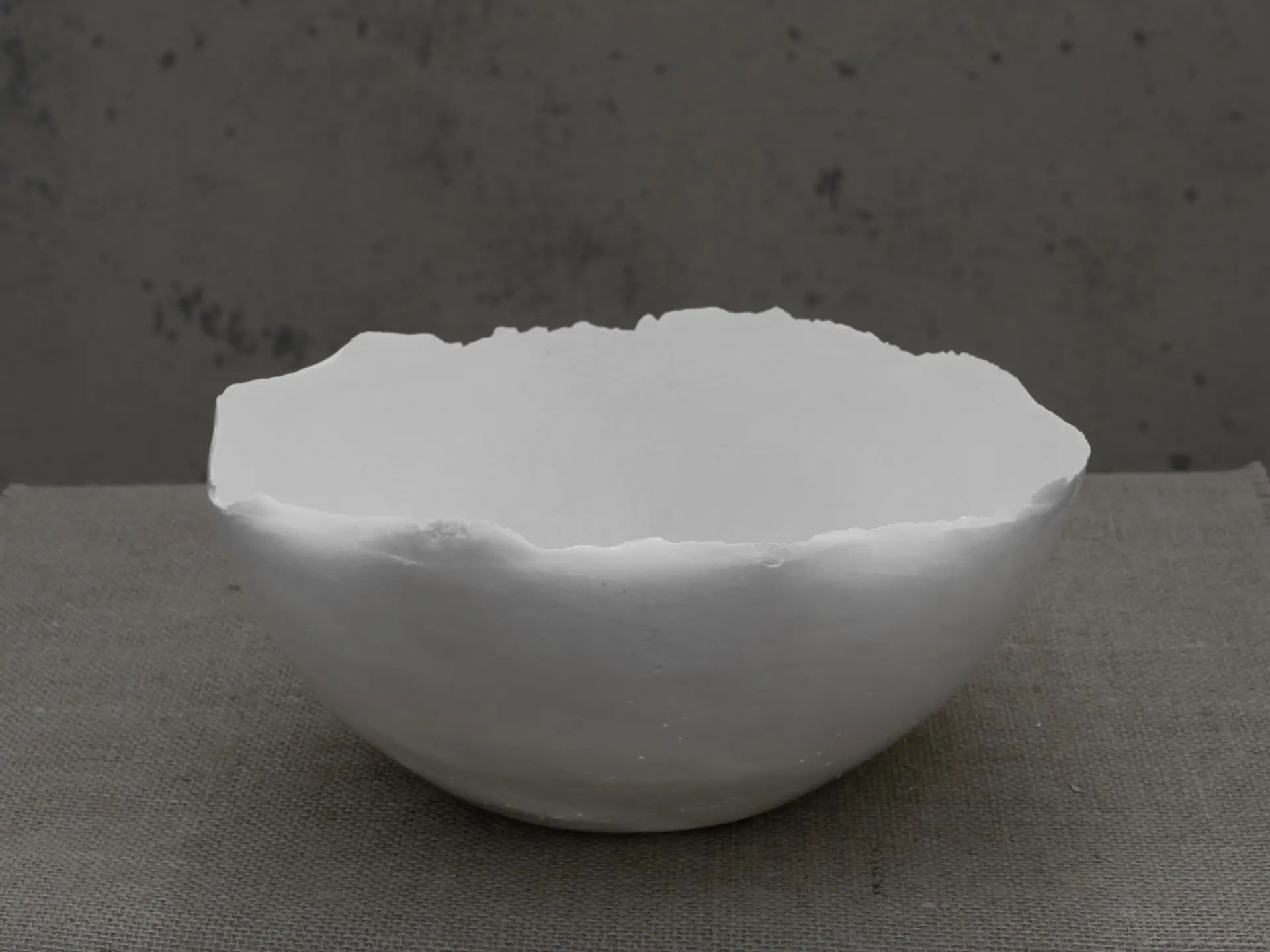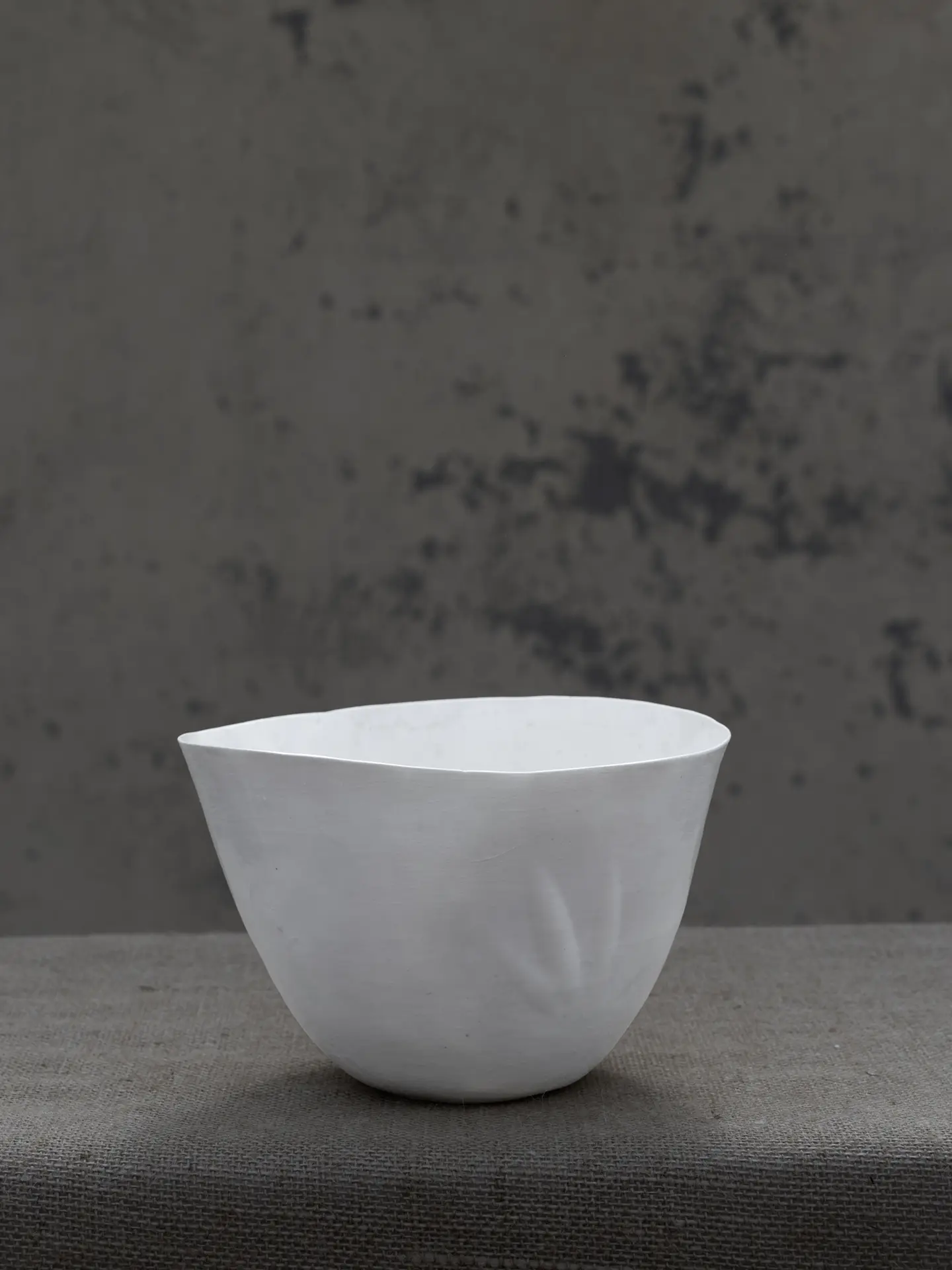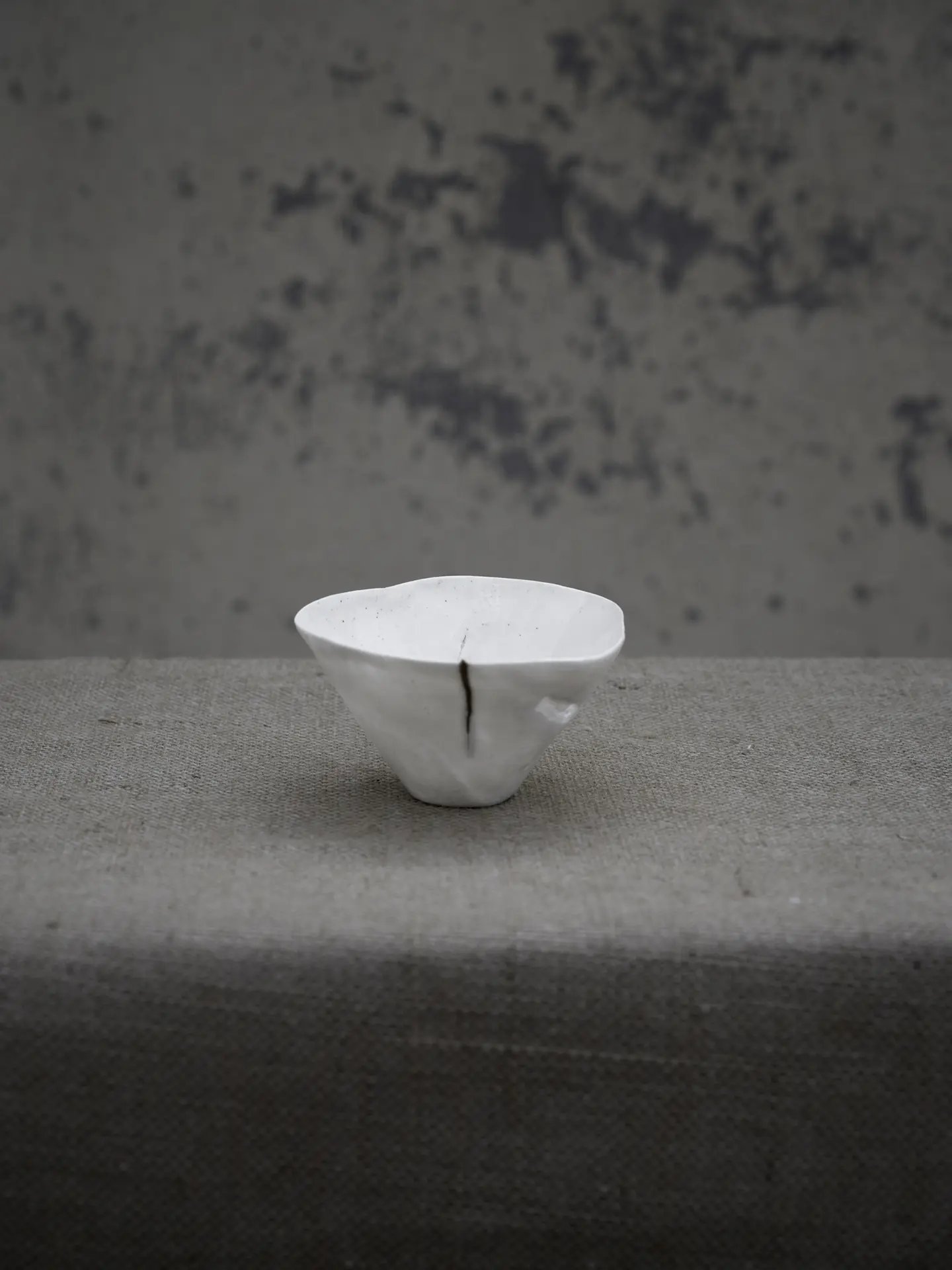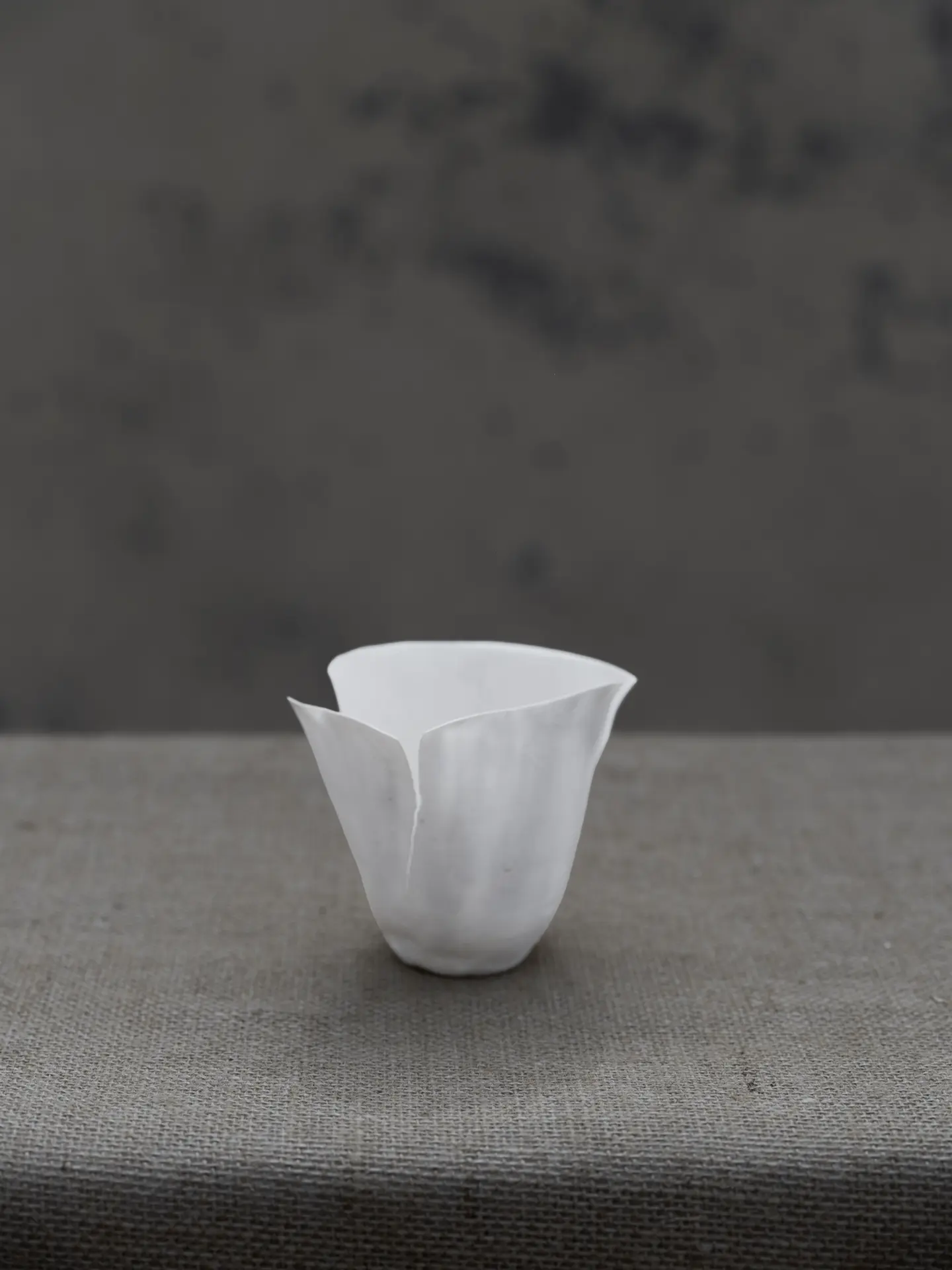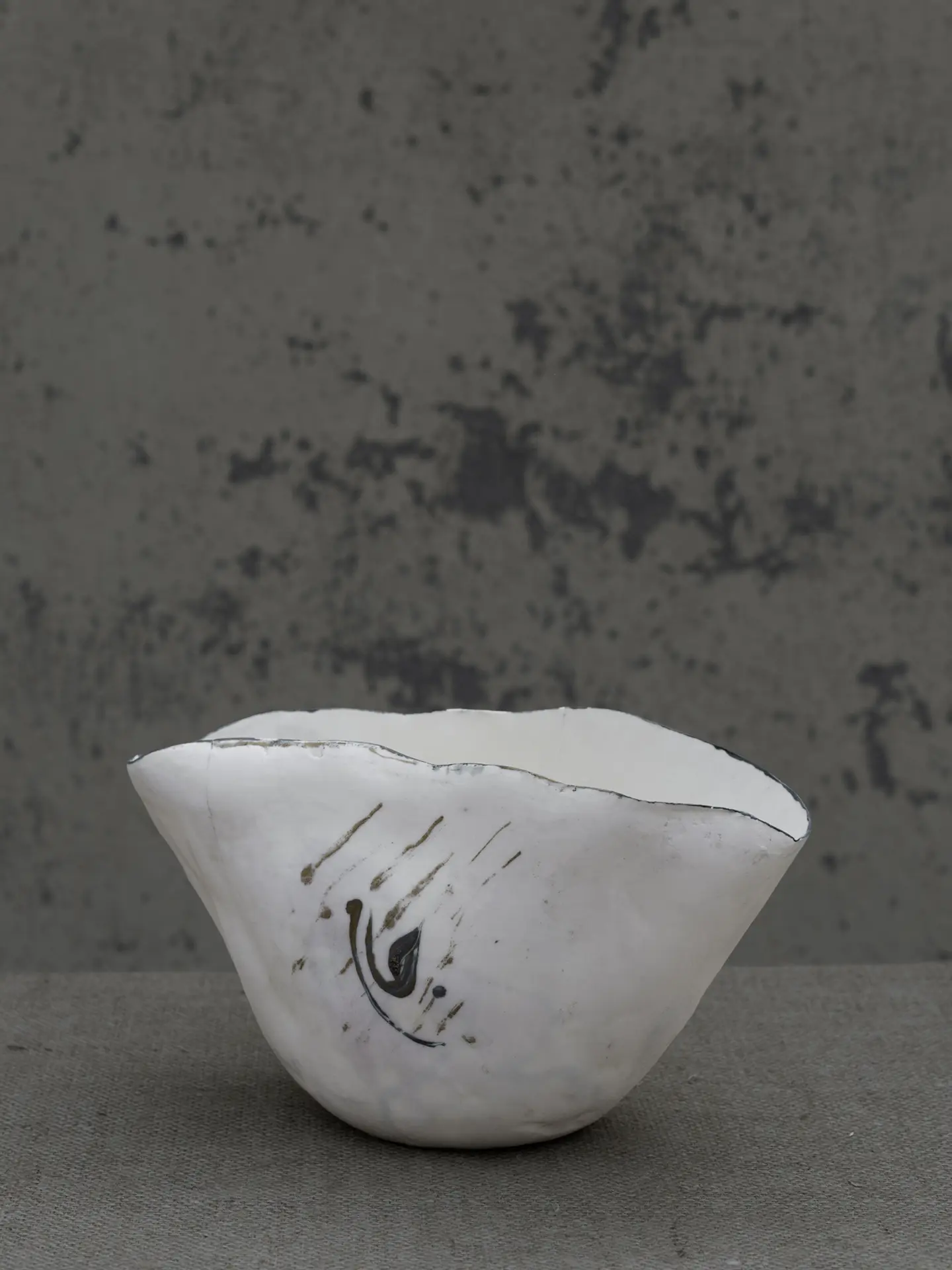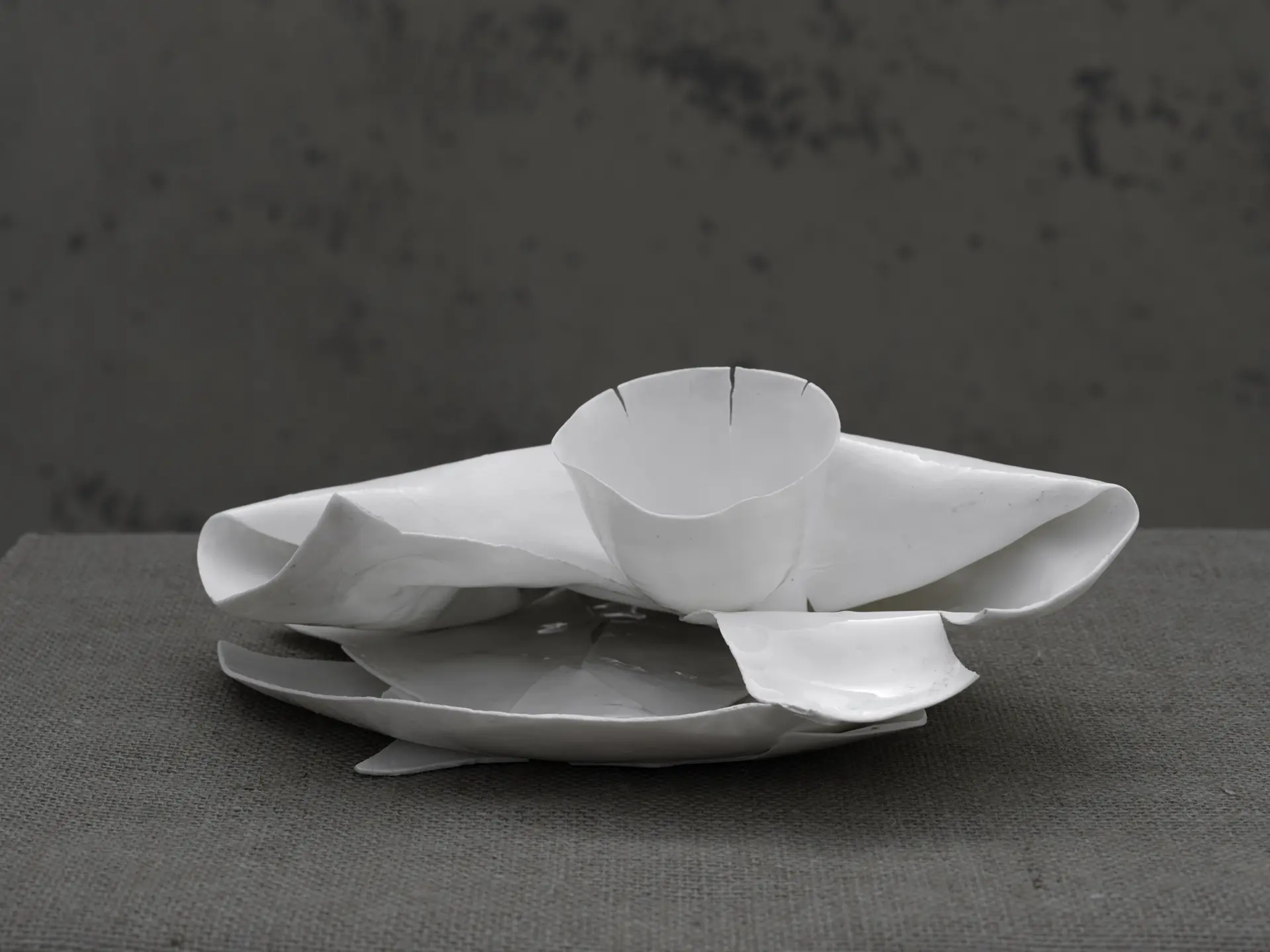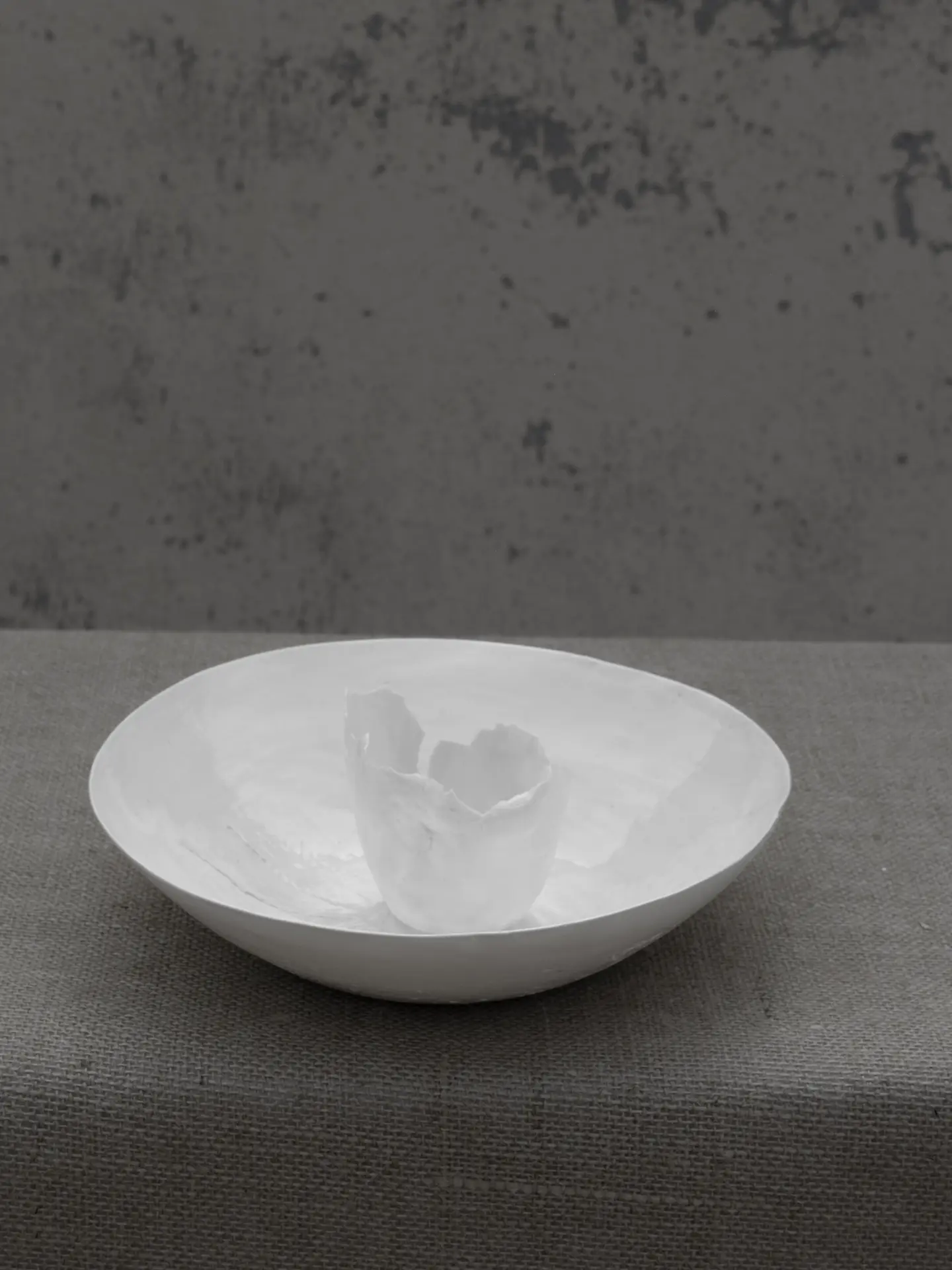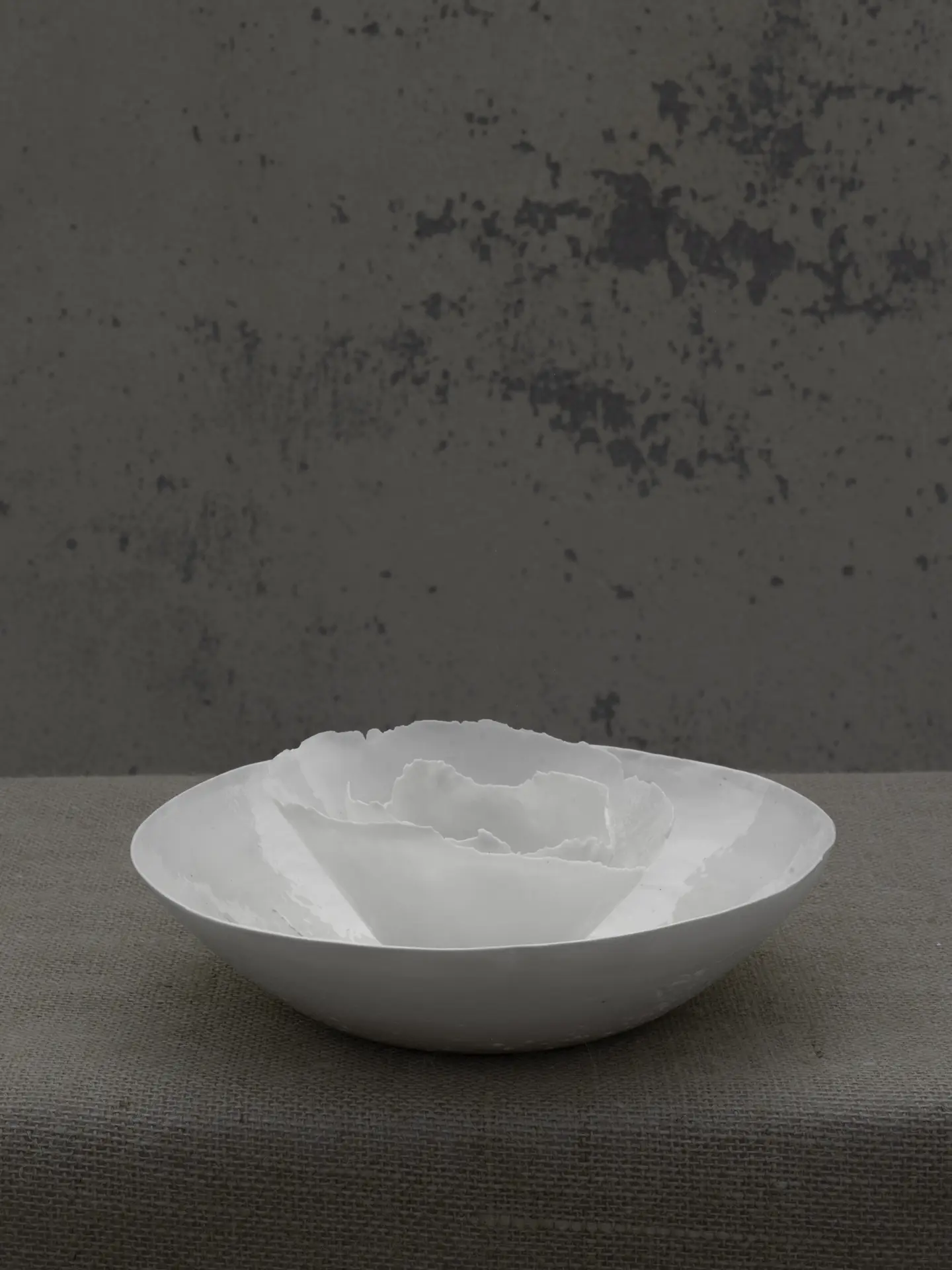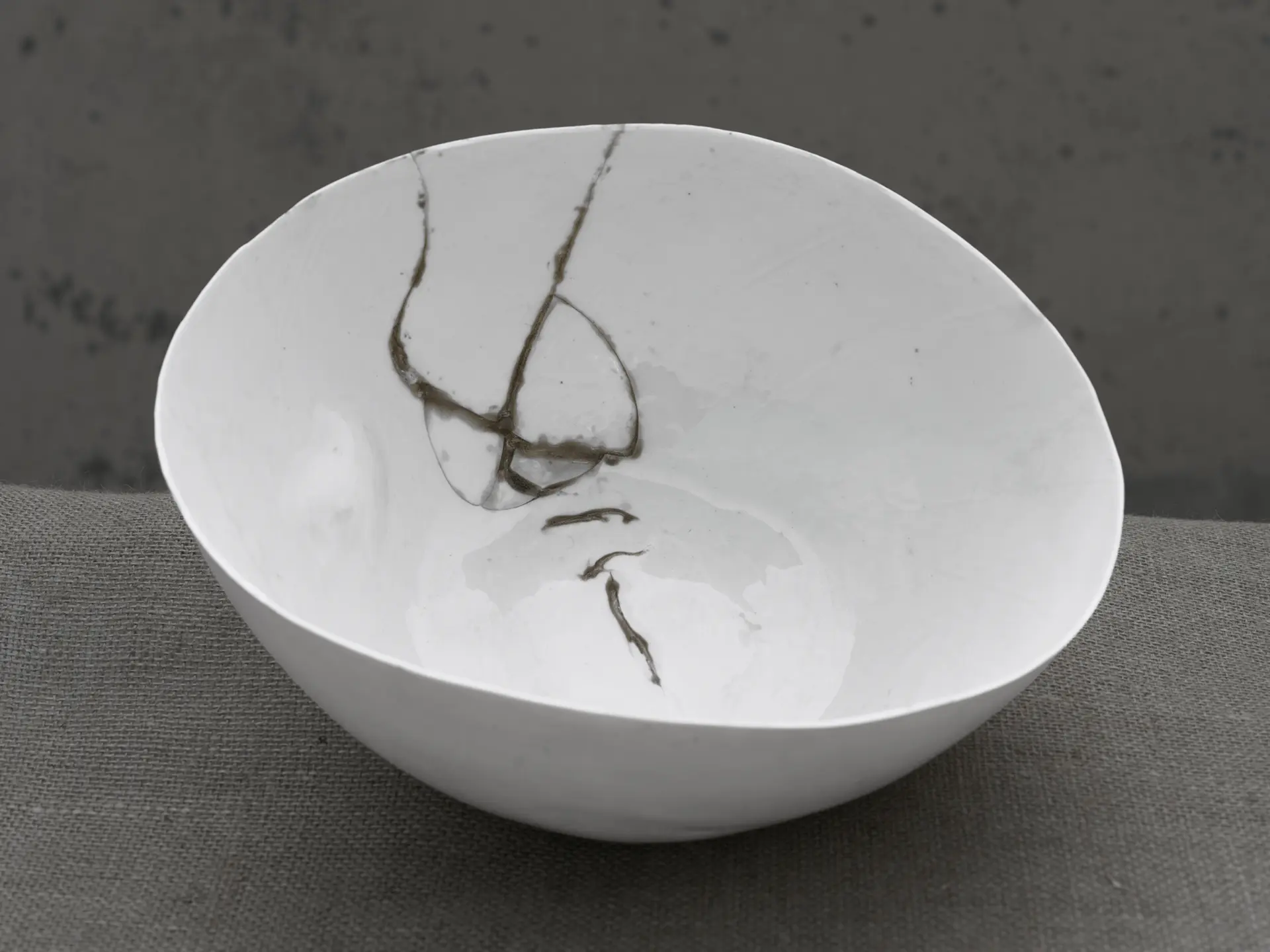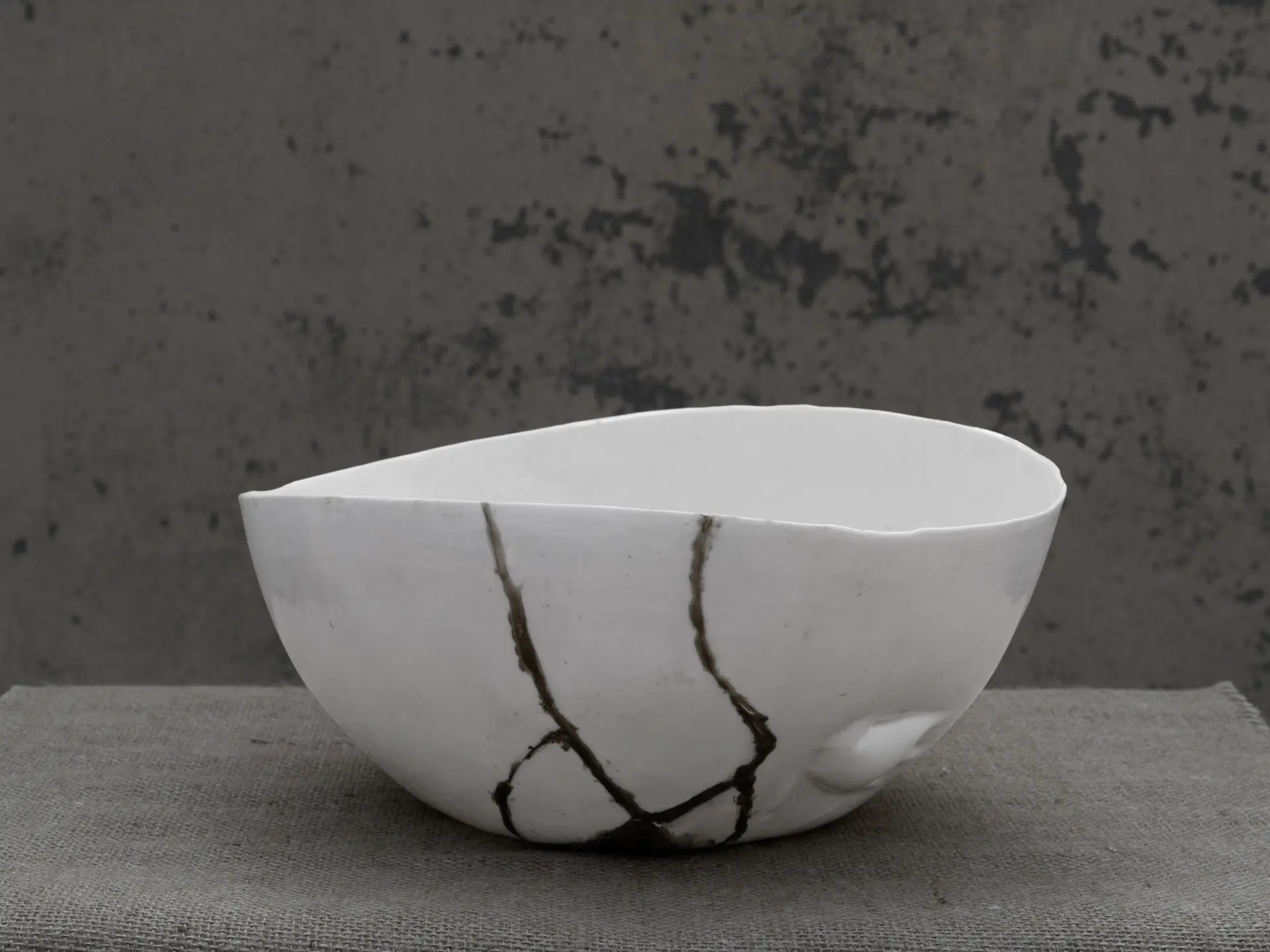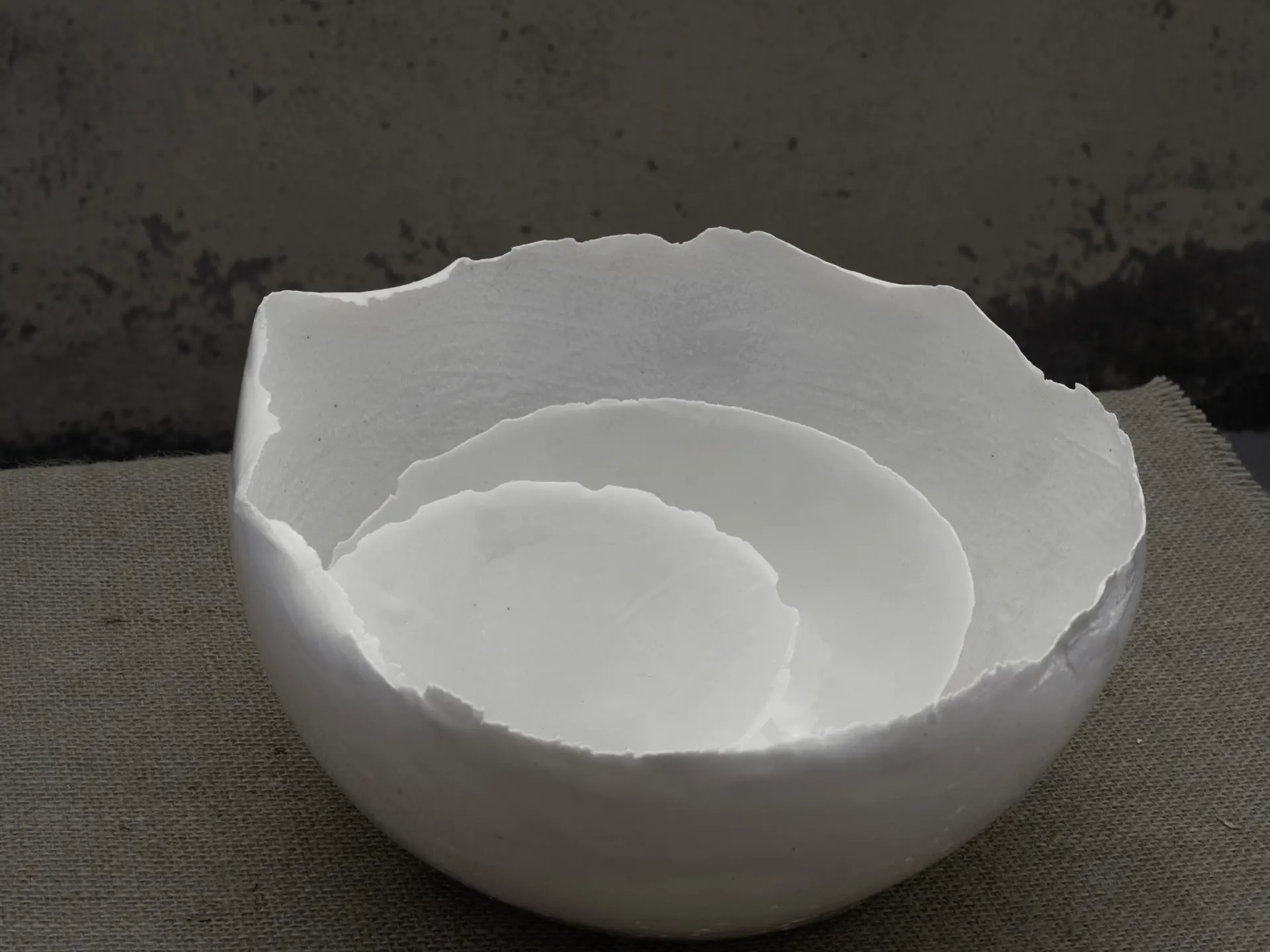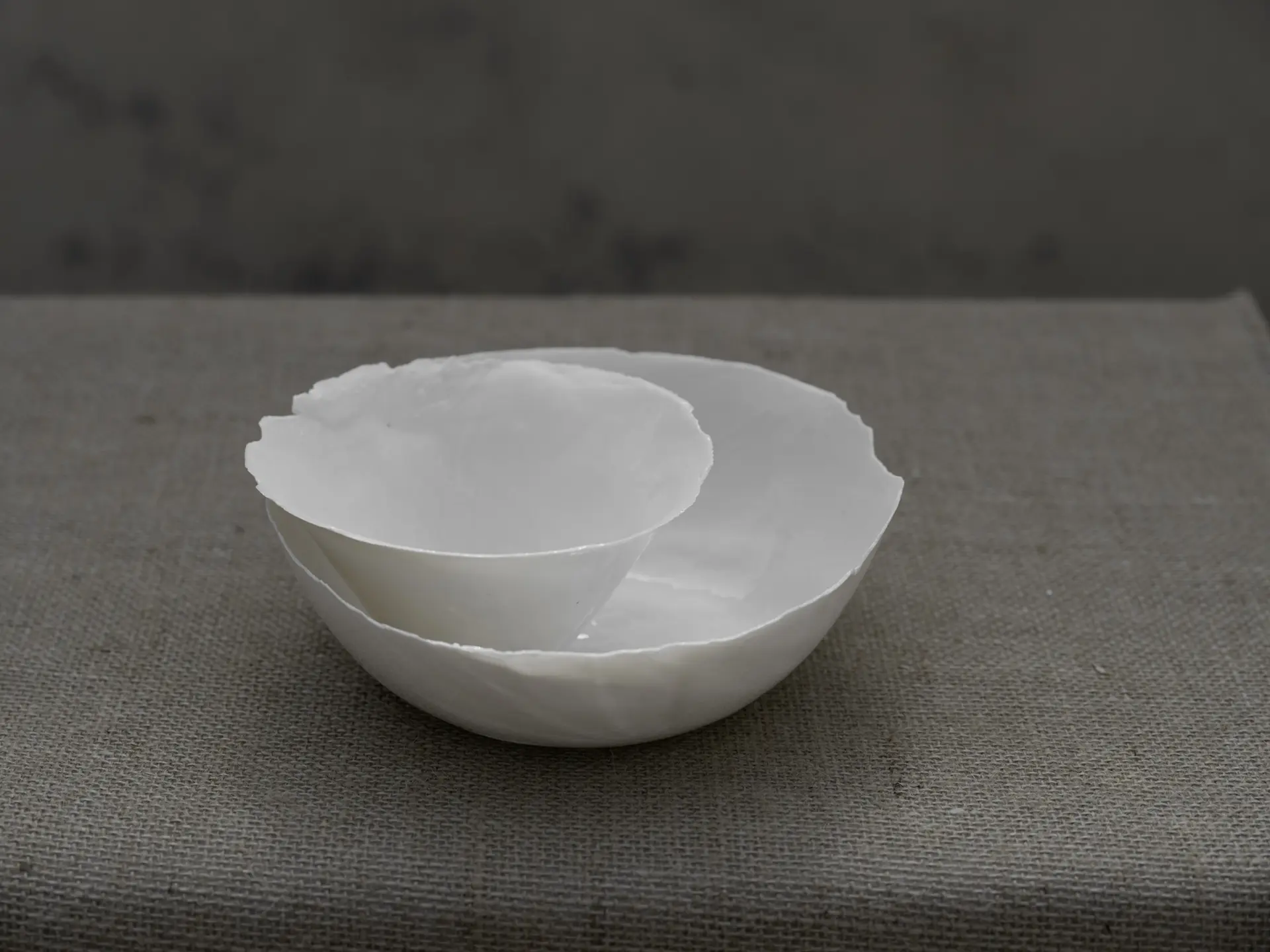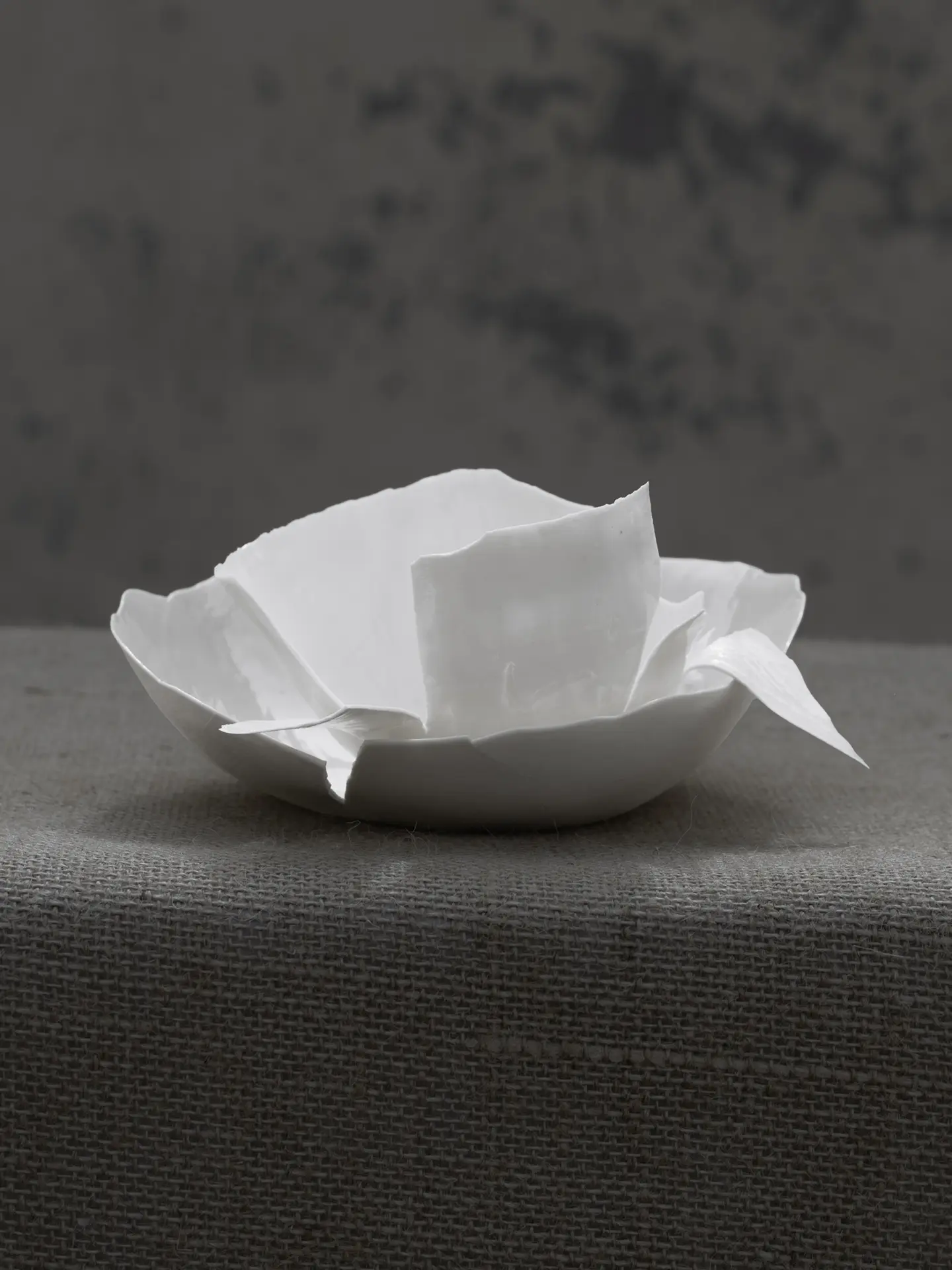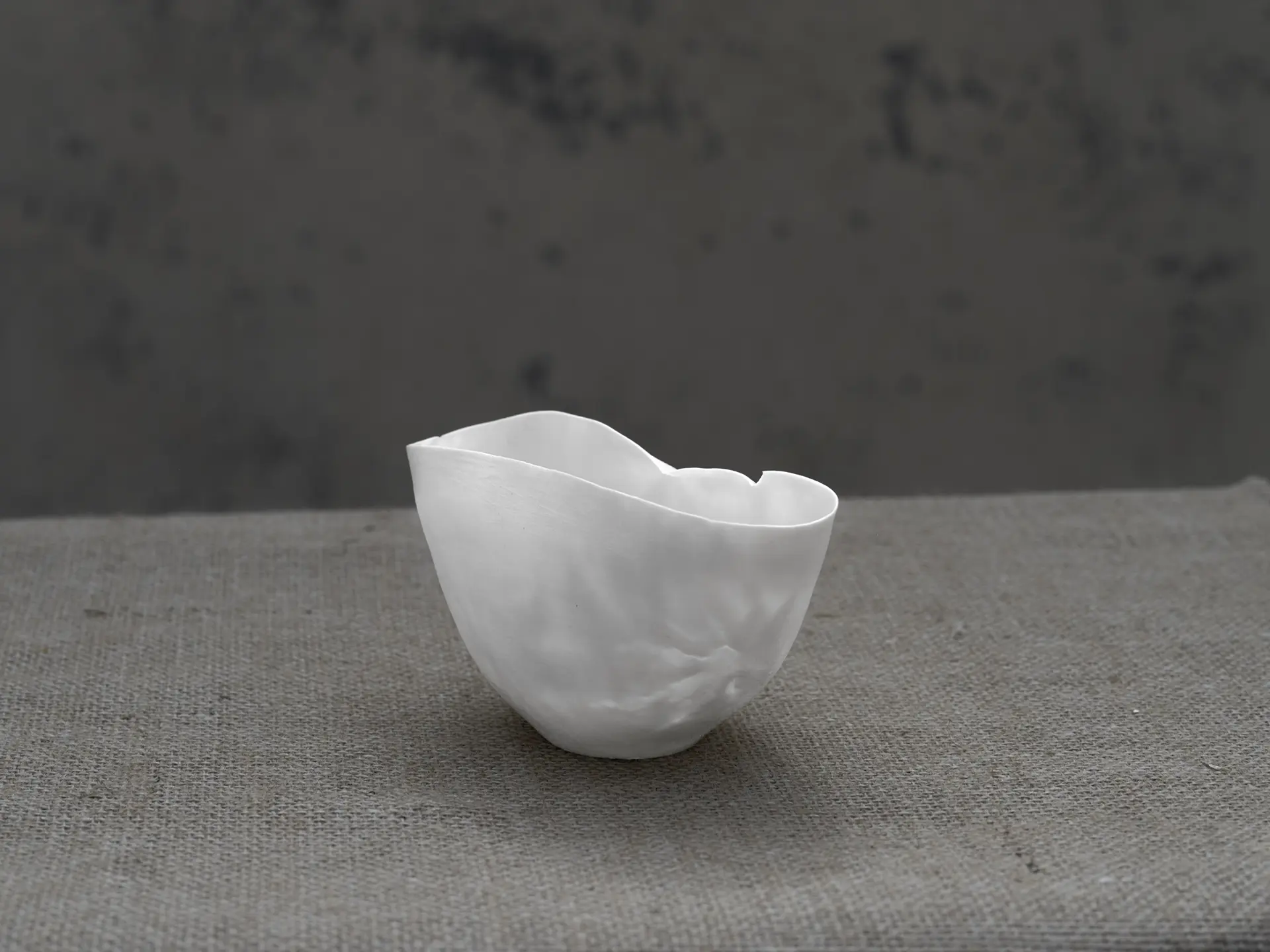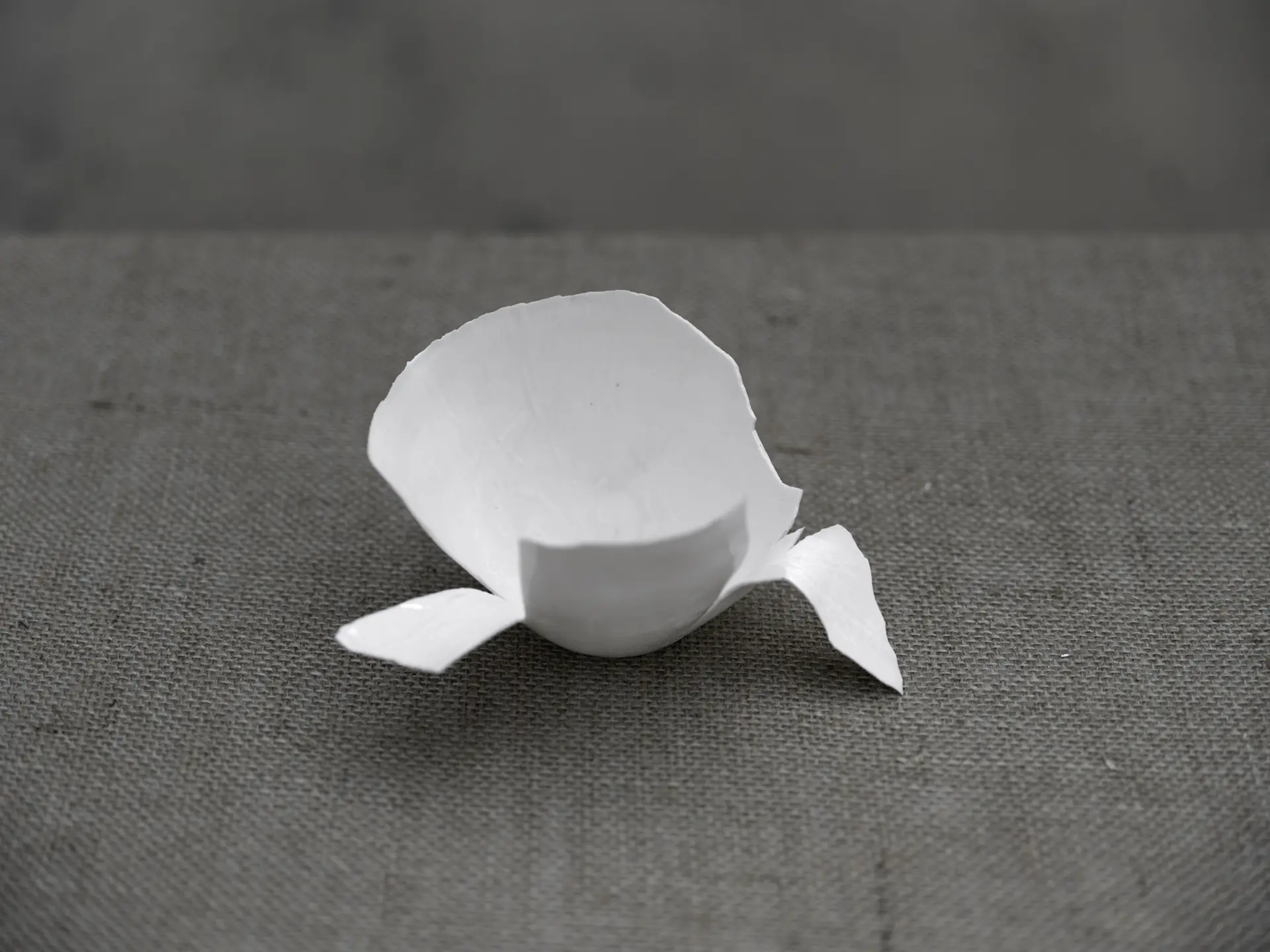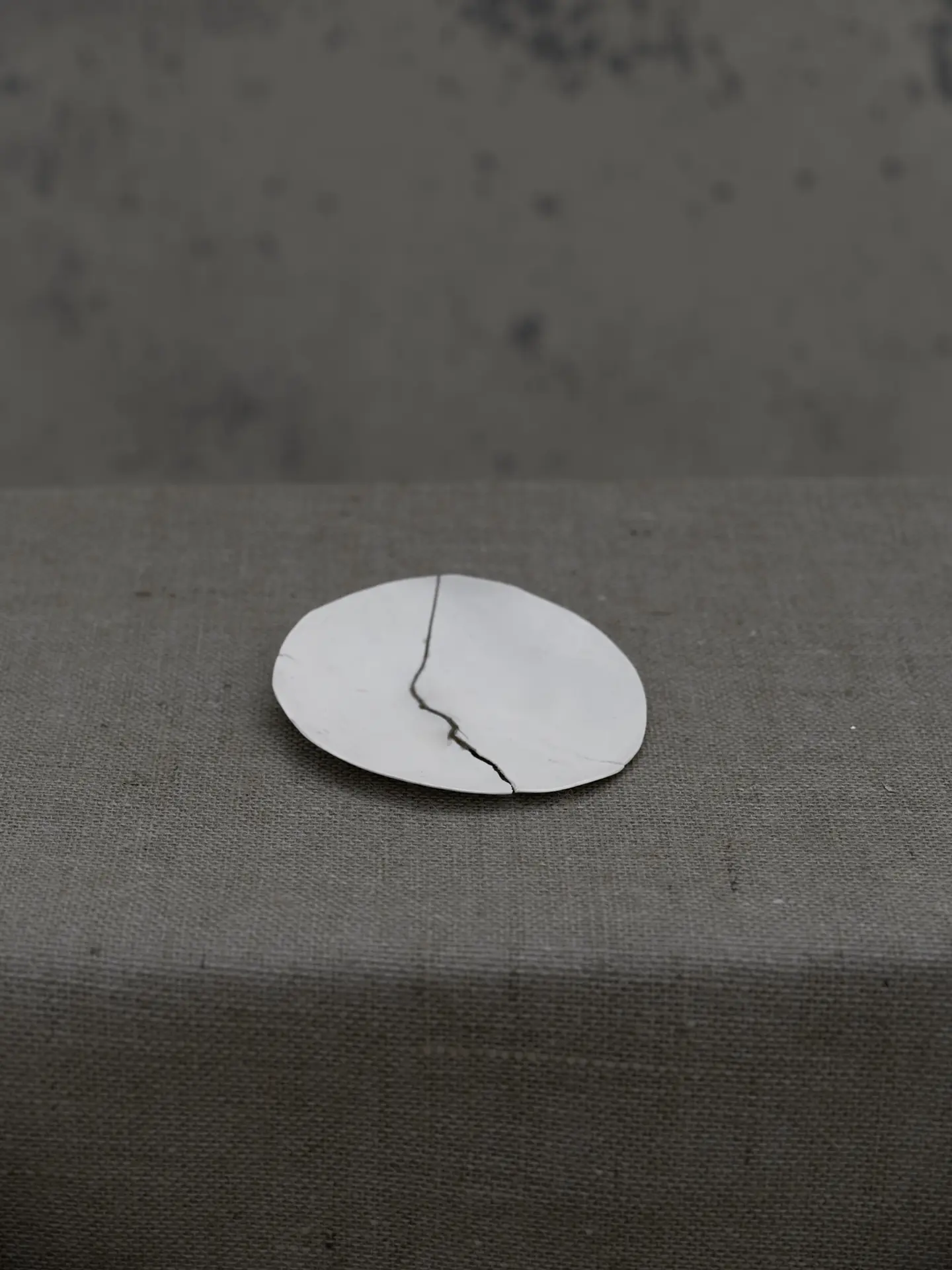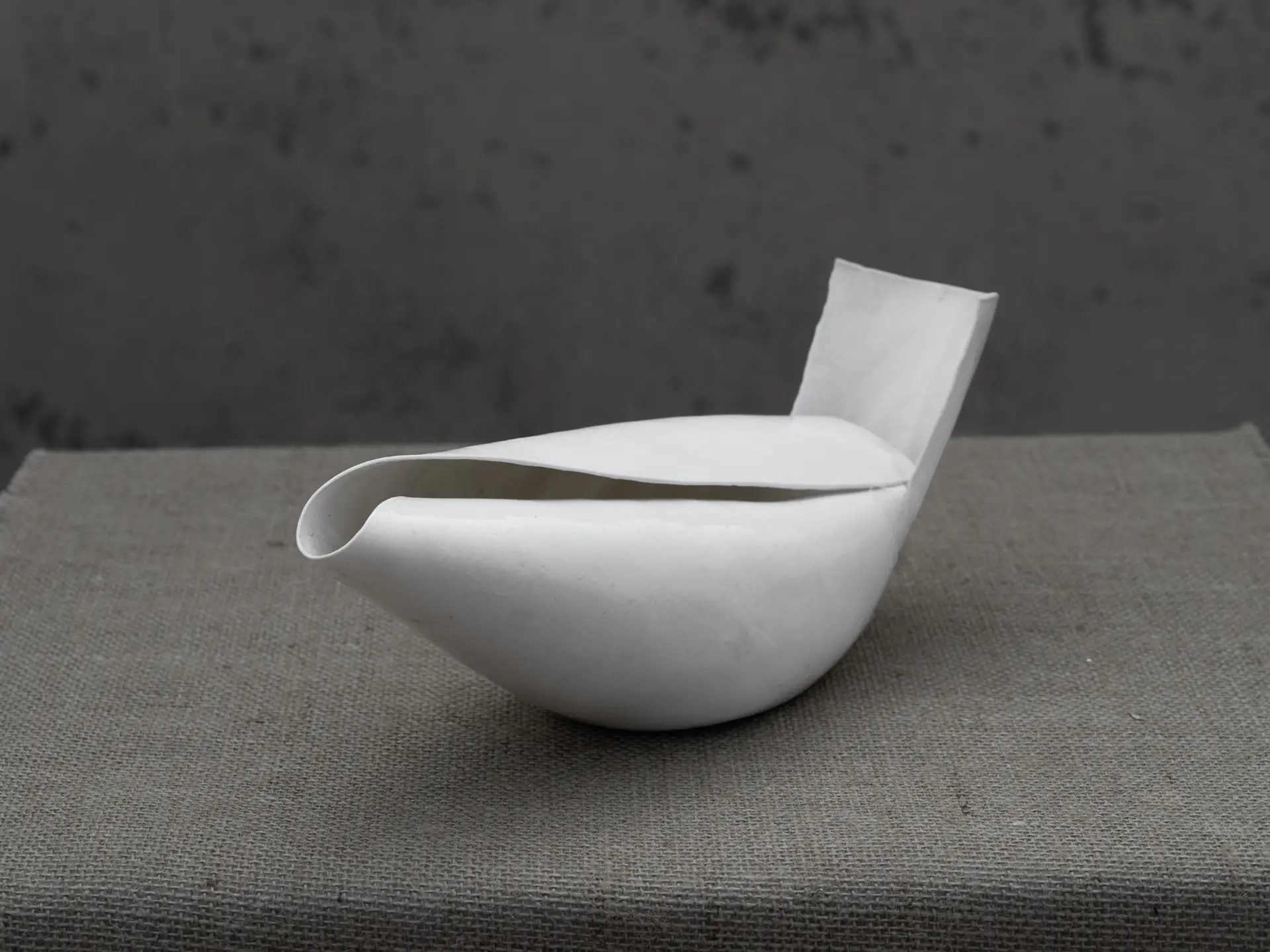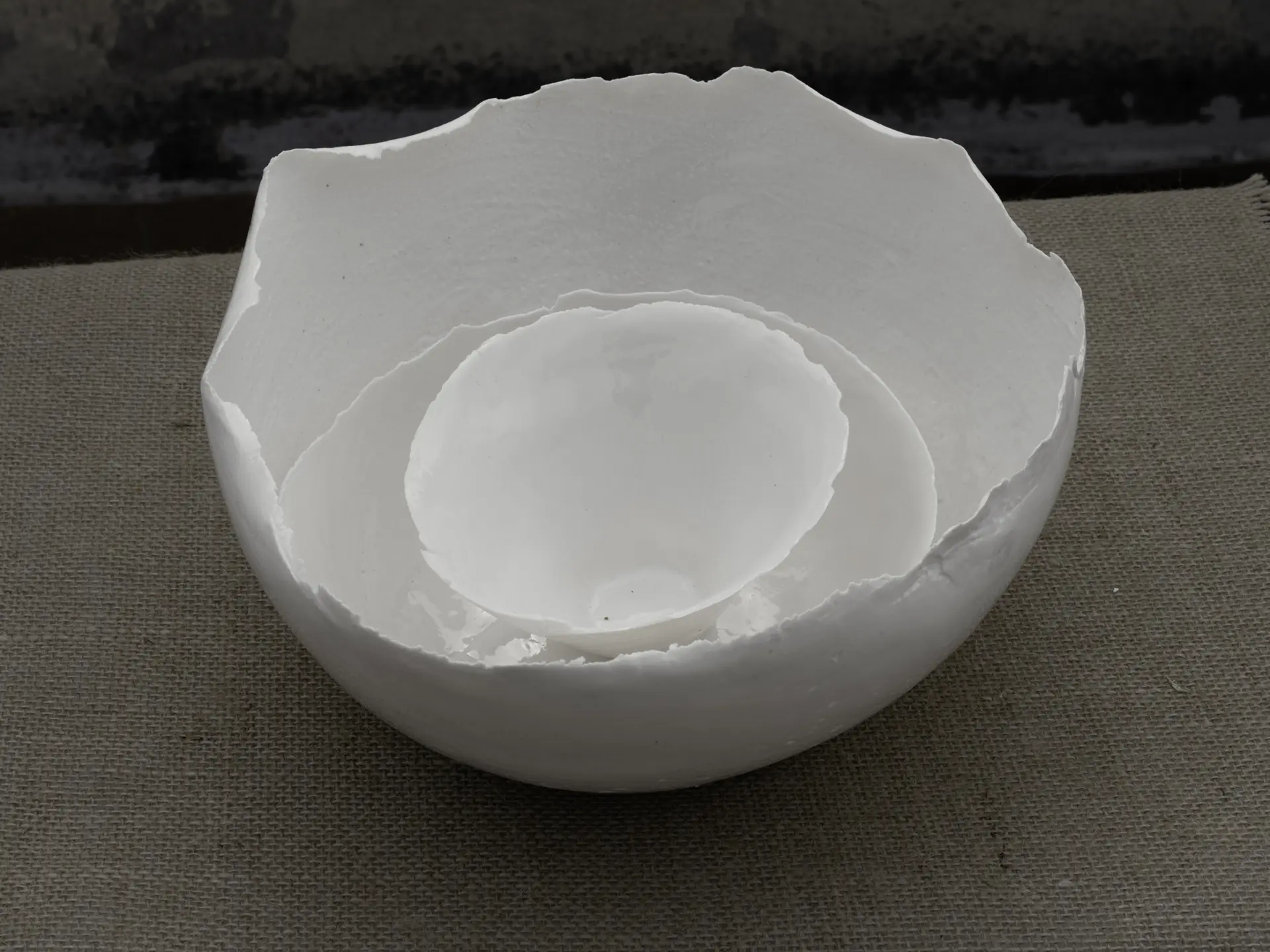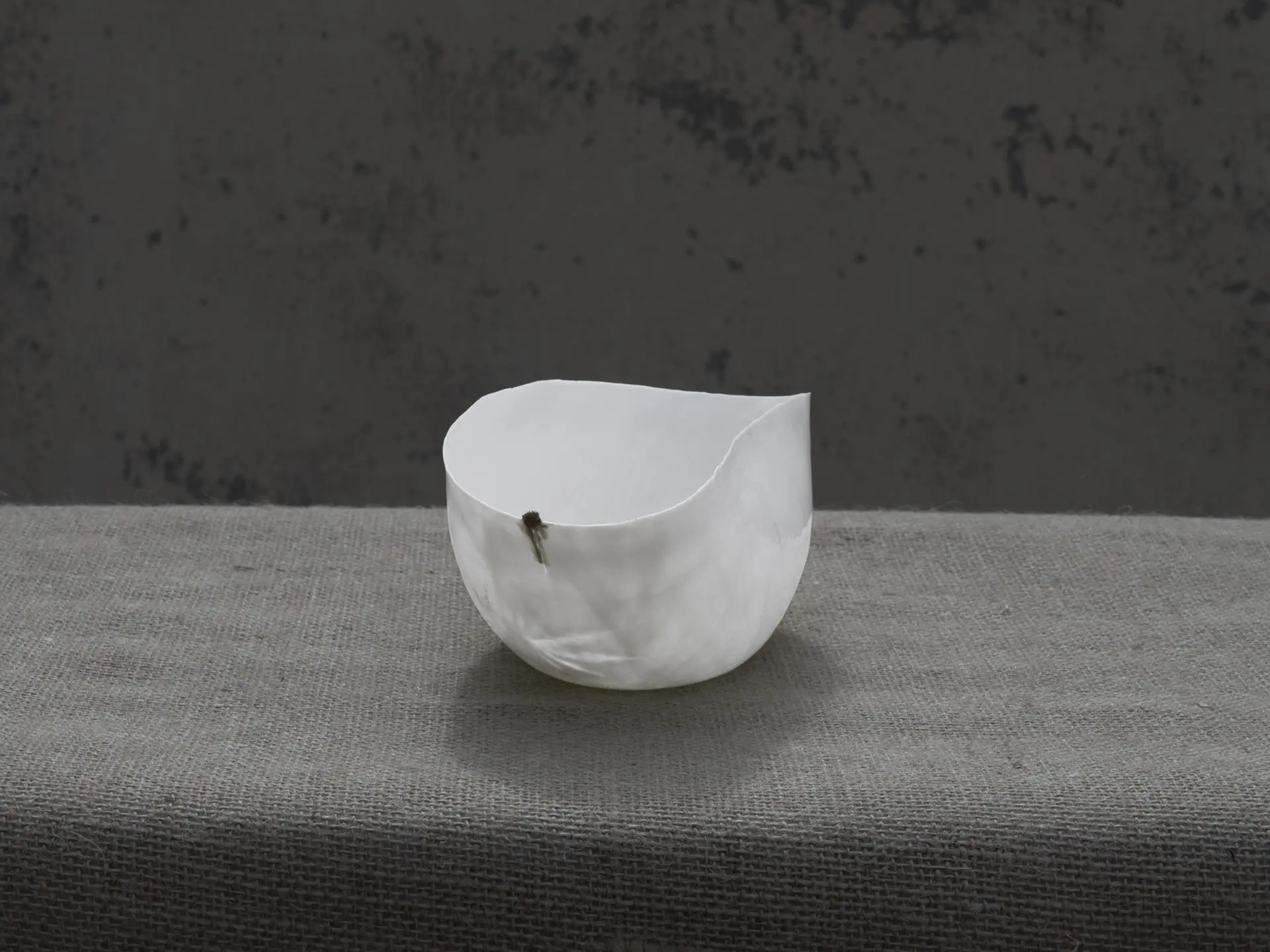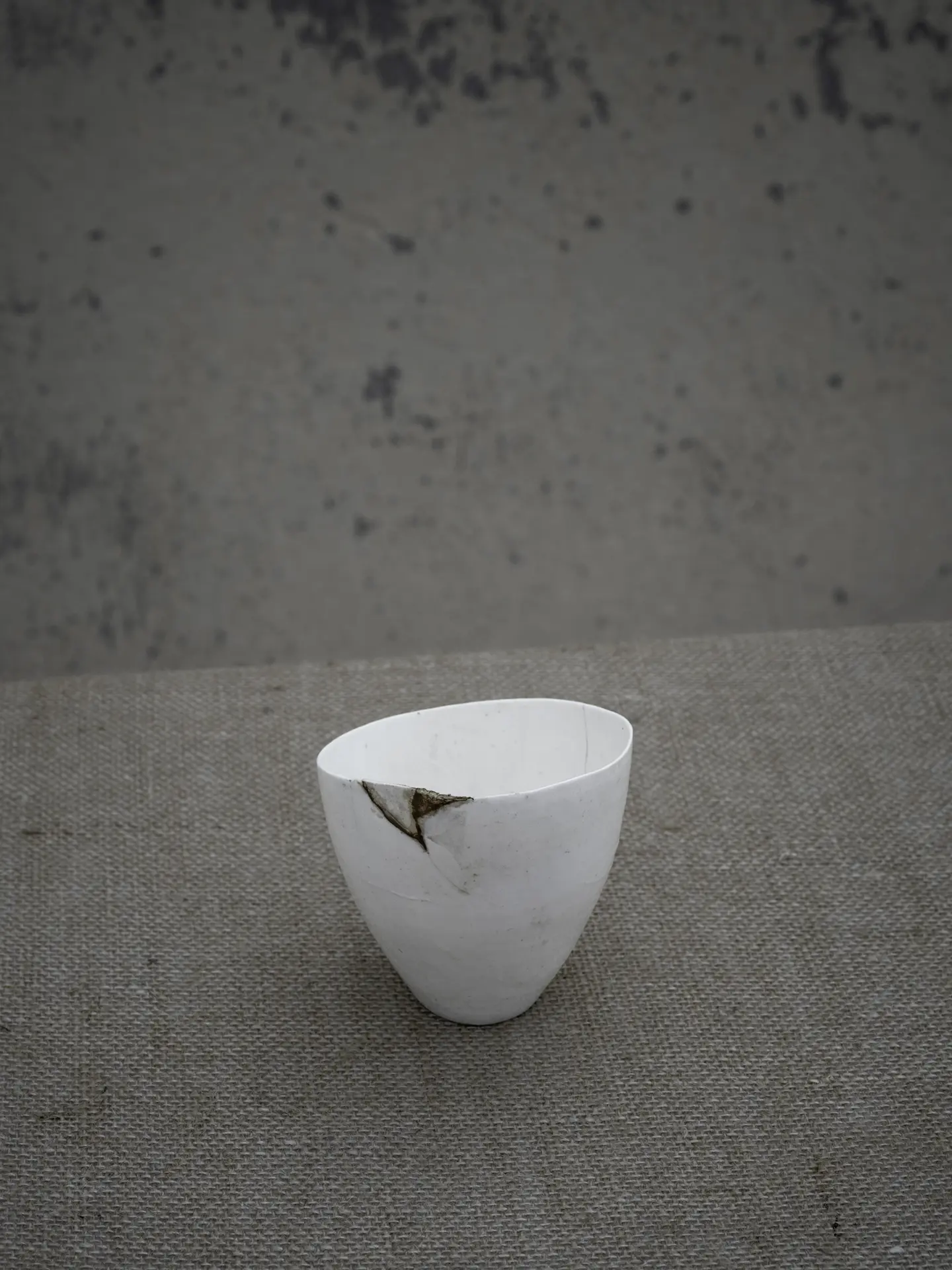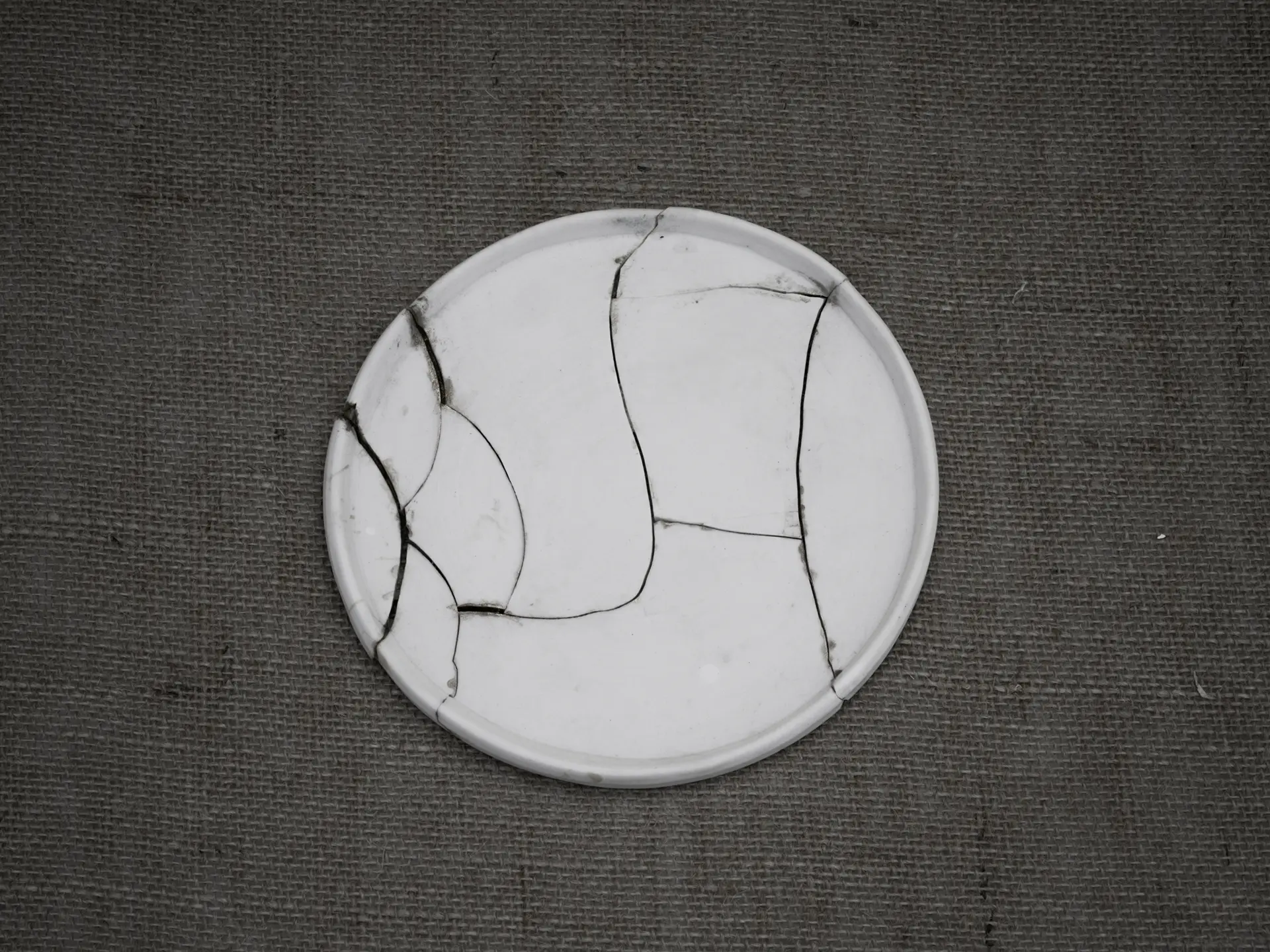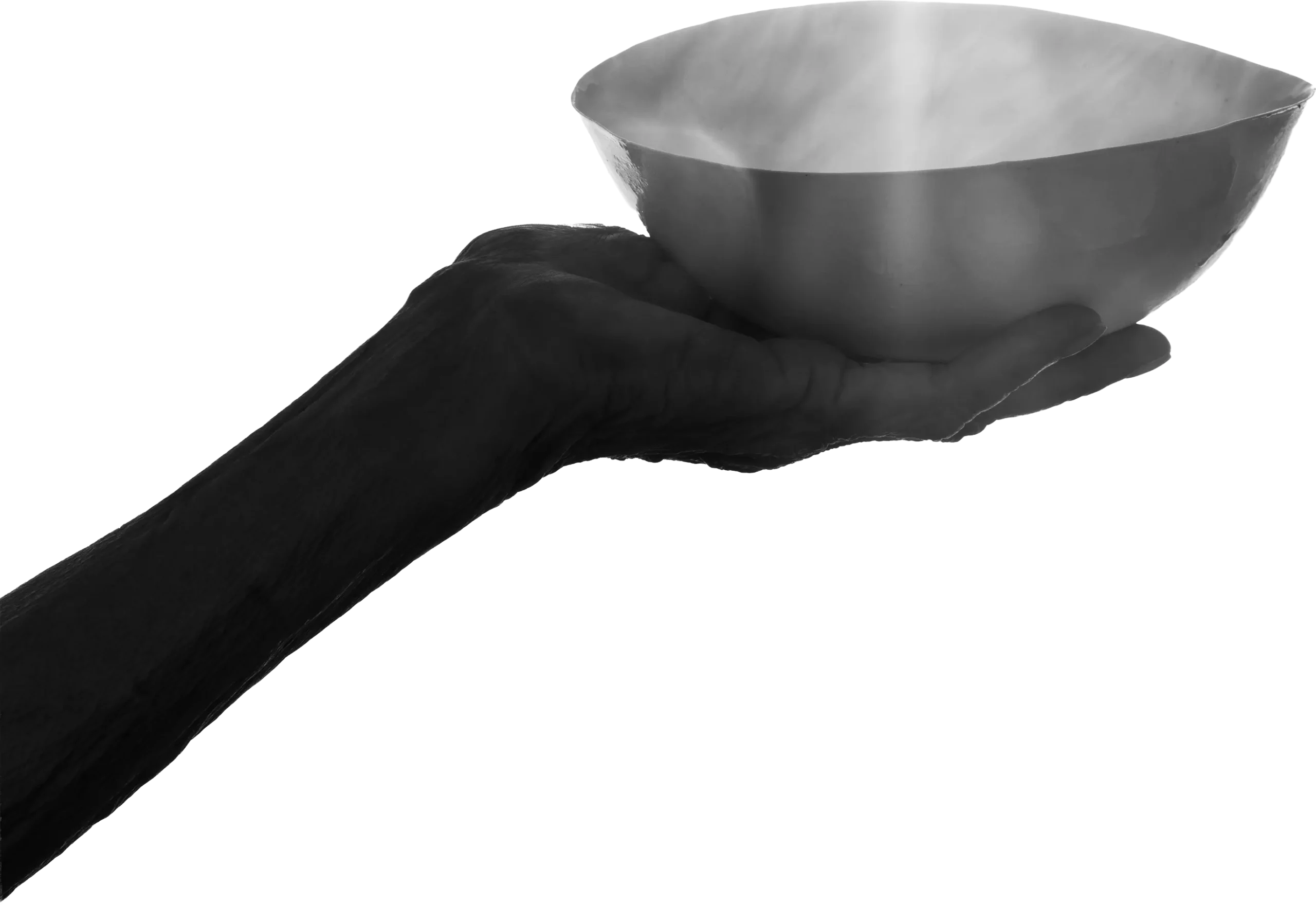
The wound is the place where the light enters you
—Rumi, Persian Poet, 13th Century (attribution)
Manije’s porcelain vessels draw inspiration from Persian Sufi dervishes, who use the jām—a symbolic container—for giving and receiving spiritual offerings.
Over the years, she has honed her craft to create porcelain distinguished by its exceptional thinness and remarkable delicacy.
Her jāms, often appearing with fractures and breaks, embody a quiet strength—forms that carry new life through their very imperfections.
Shaped by the upheaval of the Iranian revolution, Manije’s work speaks to the quiet resilience found in brokenness, and the enduring beauty that emerges from it.
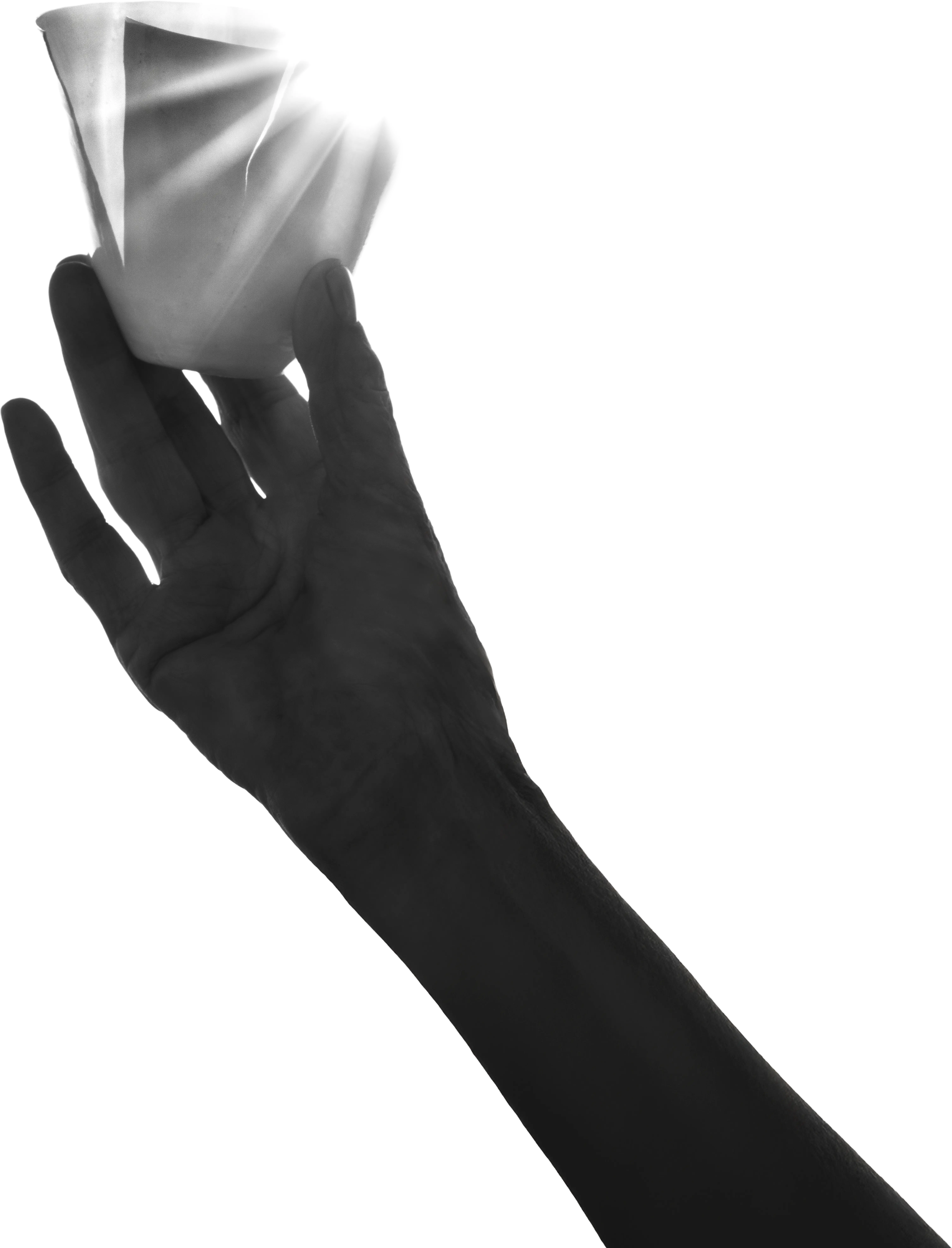
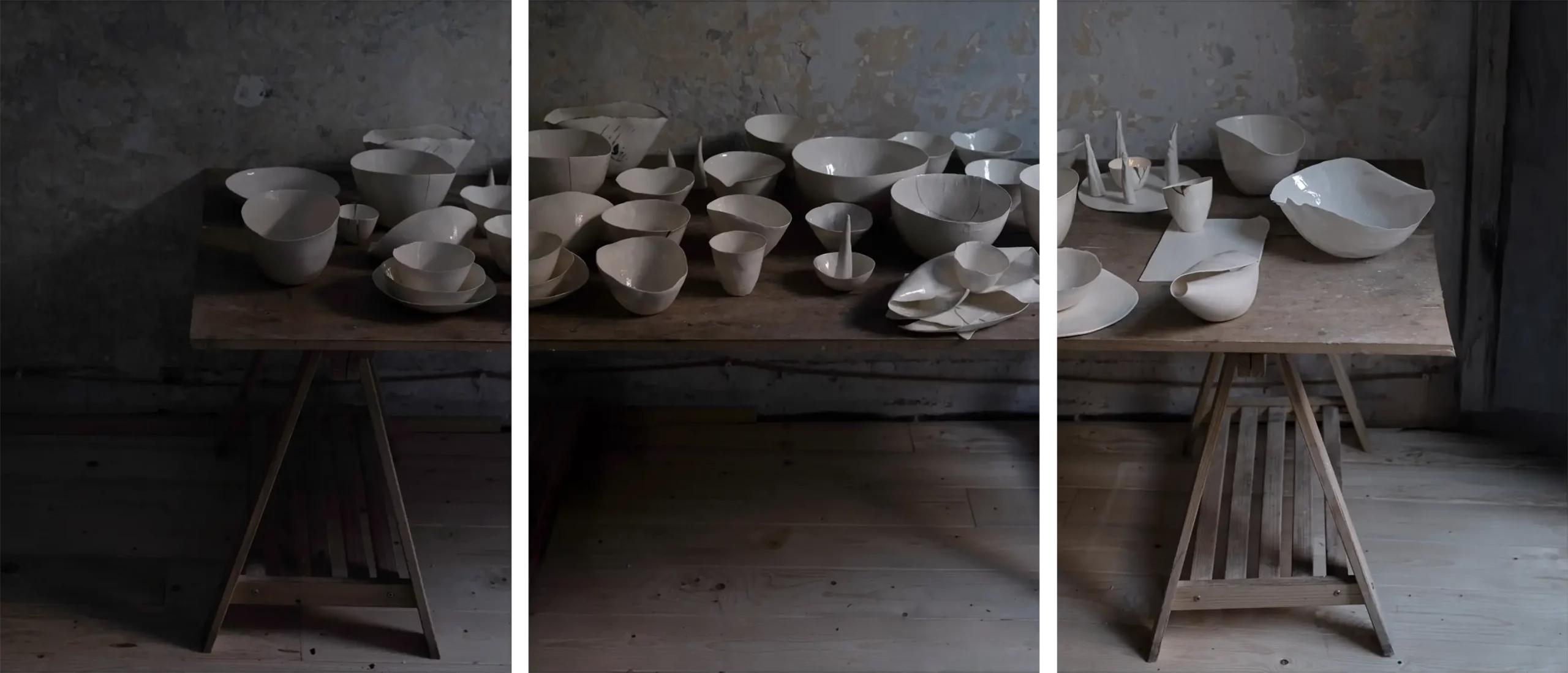
The exhibition Broken Beauty by Manije Mirdamad arises from a profound reflection on the beauty hidden within fragility and rupture. Her delicate porcelain works become symbols of resilience, capable of transforming vulnerability into strength. Each crack becomes a fragment of light that invites recognition of imperfections as a precious part of oneself, both individually and collectively.
This poetry is rooted in the tradition of the Persian Sufi Dervishes, mystics who seek union with the divine through rituals and dance. Manije's works evoke symbols from her culture: the Jamshid, the legendary royal cup that guards hidden truths, and the Kashkul, the simple vessel used to collect alms, symbolizing humility and a spiritual path. These elements intertwine myth and reality, the sacred and the everyday, building a delicate bridge between soul and life.
The act of shaping porcelain becomes a living memory, a thread connecting past and present through the narration of form, always suspended between elegance and an almost ethereal transparency. Yet within its extreme fragility lies the truest poetry.
Shaped by the scars of the Iranian revolution, Manije expresses a silent resilience and enduring beauty. Her personal experience merges with a universal language that delicately conveys profound emotions. Her creative journey explores transformation, thinning the material to the edge of its existence and tracing rare beauty in the fractures. Imperfection thus reveals itself as a precious quality, from which the exhibition's title is born. Broken Beauty is an ode to the harmony that arises from embracing authentic fragility.
In an era often affirming perfection while avoiding complexity, this work offers a powerful invitation to welcome vulnerability.
Every crack tells a story, every fracture becomes an opportunity for growth and rebirth. Broken Beauty opens a collective dialogue on transformation and the celebration of our many shades, honoring the richness of the complexity of the present.
Ludovico Genone, Co-Curator, 2025
